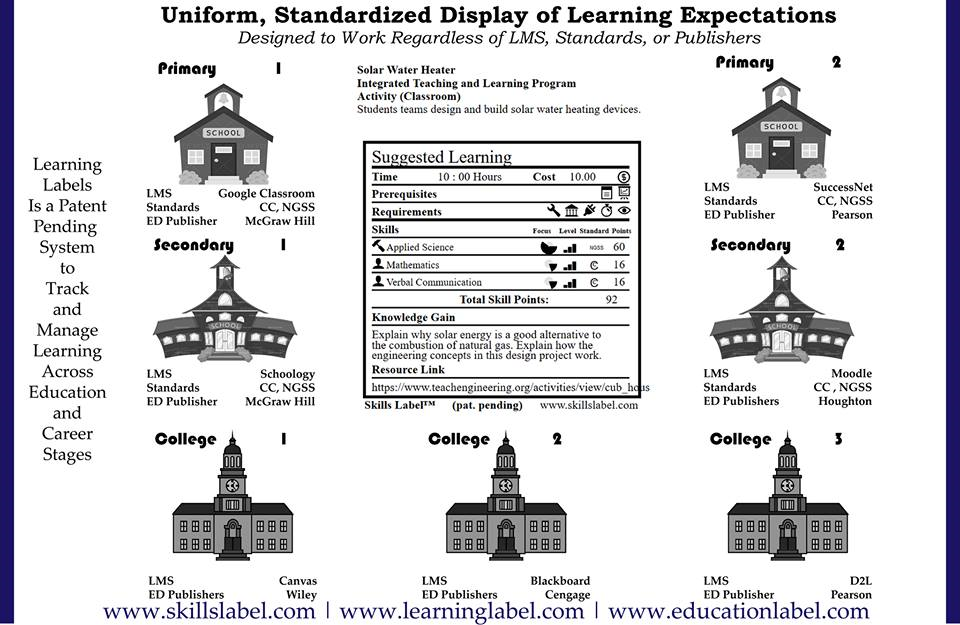Regarding the adoption of technologies, education and higher education is highly fragmented (surprisingly also within demographic regions). As I build awareness of the learning labels technology, I speak to numerous representatives at high schools and colleges.
I concentrate on three specific technologies: learning management systems (LMS), platforms of education publishers, and credentialing systems; also pay attention to the standards institutions are adopting. Teachers and professors are inundated with new technologies and applications. What are their decision points in adopting them? Many of these technologies are expanding their commitment levels, from projects to curriculums to grades – this will have future effect.
The learning labels technology is a patent pending system to track and manage the development of skills. This includes a standardized display of learning expectations and a dashboard to manage them. The labels define learning for a single unit, like a task or assignment. They can be connected in a series for a project, lesson plan, or course.
Learning labels are the best way to represent education and training standards. Easy to assign the standards onto a learning label, either starting with a skill and getting a standard or starting with a standard and getting a skill. The display shows all the relevant standards information.
Learning labels are meant to work with LMSs, not compete with them. Currently, labels work ideally with Google Classroom – a single click button for an assignment. I am planning similar integration with the other LMSs.
I have talked to high schools that are using Schoology, Blackboard, and Canvas. High schools are also using Google Classroom and Moodle.
With standards, high schools use Common Core or state variants of the national standards. Some are using Next Generation Science Standards (“NGSS”). (Both of these standards are built directly into the learning labels interface.) There are also learning standards for technology, computers, and language.
Binghamton University is doing a campus-wide study in comparing three different LMS systems: Canvas, Brightspace, and Blackboard. I am interested in hearing their results. Universities are also using Moodle.
How do we track the learning across systems? How do we manage learning across education stages? An advantage of the learning labels technology is tracking learning regardless of the systems, stages, or standards.
Each of the major education publishers (Wiley, Cengage, McGraw, Pearson, and Houghton) is creating their own systems to manage the education resources for their education and higher education markets. (Not surprised by McGraw and Cengage consolidating, combine their resources and systems.) They are going after a K-16 market. An interesting dynamic is how much teachers and professors get locked into a curriculum provided by these publishers.
How do teachers or professors compare curriculums or specific resources offered by different publishers? In either situation, learning labels is an ideal platform to make a basis of comparison decisions and track the learning across publishers.
Learning labels standardize how we represent learning, not the learning itself. Try this application at www.skillslabel.com
